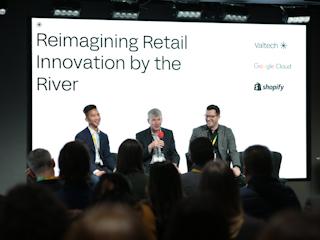16 noviembre, 2023
We all want to feel special. We all want to feel seen. We all want to feel understood. And our customers are no exception.
The relationship between shoppers and retailers has transformed. Loyalty is no longer about rewards programs and discounts; it’s about building relationships that reflect real-world needs and individual wants. The key to this very human desire for connection lies in data. By harnessing and connecting customer insights, retailers can deliver meaningful experiences that spark lasting loyalty.
Organizations are waking up to this increasingly personalized future. Nearly 80% of companies plan to revamp loyalty programs in the next three years, according to a survey by Antavo, a loyalty technology provider. But are they focusing their efforts in the right places?
Many retailers are sitting on a gold mine of unloved and underutilized customer data. You can have a great product and provide a great service, but without deep data insights, your efforts to build lasting loyalty are likely to fall flat.
Data is already powering customer loyalty. Retailers who recognize this and embed a strong data foundation into their broader strategy are likely to succeed even in the most competitive marketplaces.
Understand your ‘best customer’
Personalization isn’t always straightforward, and many shoppers have been disappointed by their experiences.
Strong commerce foundations aren’t enough, businesses must pinpoint and aggregate data to effectively segment their customer base and create targeted marketing campaigns that speak to unique interests and preferences.
The path to progressive personalization starts with a “best customer” mindset. This means identifying a cohort, segment, group or individual who represents your target consumer. Once you have this information, you can work forward and backward to model how to move customers along the “best customer path,” creating a deep understanding of the actions most likely to progress and deepen interactions.
For example, one of our clients, a leading beverage retailer, uses propensity modeling—a statistical approach that uses data to predict behavior—to analyze and optimize its rewards program. This approach helps the business to better understand and segment existing customers and consider various scenarios, such as whether the program incentivizes purchases in different categories by cross-selling without losing recurring sales.
Build progressive personalization
As companies compete for buyer loyalty, it's essential to focus on delivering more than an occasional discount—instead, providing holistic loyalty experiences that maximize value. Consumers have access to a whole range of loyalty programs and offers; the retailers that stand out are offering benefits and experiences that tap into deeper needs.
For instance, we helped a digital broadcasting and streaming provider build increasingly personalized customer relationships, which have improved satisfaction levels and stabilized retention and subscription rates.
We created an intelligence hub using systematic data gathering and pipeline building to personalize “what to watch” recommendations. This drove a 113% increase in conversions, leading to a greater consumption of media. We’ve built on this approach to personalize a range of on-screen experiences—creating a truly holistic loyalty model at every touchpoint.
It shows that you don’t need to (and can’t) solve every customer data problem at once. Start small and keep moving to grow personalization and loyalty by improving data foundations across your business.
Accelerate speed to loyalty
Loyalty is built on trust. But retailers may not have time to nurture relationships over months or years. They’re under huge pressure in increasingly competitive marketplaces and need results now — so is there a shortcut to true customer loyalty?
The rise of instant digital experiences has led to shorter attention spans, creating opportunities and risks for retailers who want to capture and retain loyalty. They may be able to make an immediate impression with an in-app experience or hyper-personalized offer, but consumers always have one eye on the next best thing.
Brands should strike a balance between developing current relationships and attracting new ones. The answer lies in data. A deep understanding of existing customer behavior can strengthen existing relationships while creating a compelling reason for new shoppers to try out products and services.
Retailers must treat customers as gifts. They must seamlessly solve issues to nurture ongoing connections. Loyalty is much bigger than discounts and reward programs. It's about delivering value, harnessing personalization and fostering trust through experiences that are continually powered by and redefined by data.











